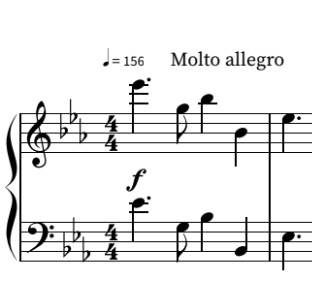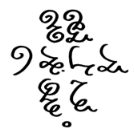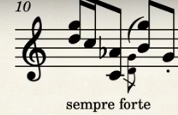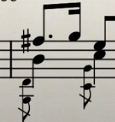Leaderboard
Popular Content
Showing content with the highest reputation on 05/05/2025 in all areas
-
2 points
-
It's actually quite funny how this person couldn't be bothered to read between the lines and as such your comments' whole point flew right over their head. Really amusing how they have essentially exposed themselves by trying to expose me, like calling them out in private for these immature tactics they're displaying at any point warranted any kind of convincing response. Moreover, playing the victim card by accusing me of "toxic masculinity" or whatever for defending myself and pointing out what they're doing is pretty low, specially coming from someone repeatedly showing this kind of behaviour. Anyway, not much else to be said about this person, by their actions it should be fairly evident by now that they are clearly ill-intentioned and ostensibly incapable of taking criticism or self-reflection. Thank you for your help nontheless, Henry, as I would have otherwise lost my temper and wasted my time and energy all by my own on someone who plainly does not deserve either of those.2 points
-
I have actually seen that post you have made and I actually thought it was really interesting since it came out from you.2 points
-
There's indeed no need, Pabio was trying to save your face but you just openly disclosed the inbox message yourself by posting. That's really X-C-LENT!2 points
-
I did play around with your suggestion, changing the triplets to the 16th notes, and yeah, it is so much more smoother now. However, I wanted variation on the second repetition, so I substituted the rhythmical change for harmonic and dynamic. I changed a bit of the notes from the ostinato, and the passage now crescendos a bit to forte then diminuendos to the unchanged pianissimo, just to add contrast. I've also properly modified the repetition at the end of the piece to match the change. Thanks for the suggestion and feedback! Glad you like the piece!2 points
-
Wow I did not expect this to be completed in such a short amount of time after I had posted the work in progress thread a week ago. That's a record. Though, I guess I did work on in beforehand. Still though, glad this one is not stuck in work-in-progress purgatory, just like the others... Anyways, since the latest progress, I've modified the return to the first theme, most notably, a flurry of ascending scale on b.105 followed by a trilled downward passage of the theme. This is done to kick start the momentum of the piano's spotlight on the proceeding bar instead of just the piano reciting the theme alone in the 2022 version. Another drastic change is that I've turned the passage from b.112 onwards to be a build-up for a proper, actual climax at b.118. Additionally, I've fixed the many of the pitch spelling errors and, of course, tidied up the score as well. There are other smaller changes on the piece as whole, but I'm not gonna list them here. I'm really really happy I did this revision 'cus, again, I just love the themes in this and it's worth putting it to my current musical knowledge. It feels satisfying and gratifying. Old version for comparison: Progress Thread (wow i posted only two progresses on there) Hope you all enjoyed this and lemme know what you think! Thank youuuu edit: thanks to @pateceramics for pointing out the ineffective rhythmical change on bar 5-7.1 point
-
Like many trio sonatas, this work consists of four movements: slow - fast - slow - fast. It starts with a three-partite Grave with a slight hint of French ouvertures, though then developing in a different direction. The second movement is a fugue. I am rather fond of a moment where all voices stop and the recorder and violin start the conversation of voices anew, and more lucid than before. The third movement is a through-composed Adagio, followed by a fugal finale in 12/8. This trio sonata is written for alto recorder, violin, cello and harpsichord, but a variety of instruments would fit too, though it leads to interesting changes in the character of the individual movements. I am not sure if the Grave and the Adagio shouldn't be swapped to increase the coherence of the music. Any suggestions welcome.1 point
-
Yes. For my taste it is a bit fast. But it's a personal thing. I think the phrasing is lost a bit and the repeated notes, for example, sound totally percussive.1 point
-
The one thing that didn't quite work for me were the initial shifting rhythms in the piano in the opening bars. (Measures 5-7 in the right hand). It felt like the effect you were looking for was more like just a rit. and having everything written out into different triplets didn't quite give as smooth a change in tempo as perhaps you were trying to achieve? I really like this piece very much though! Sterling work! As neither a pianist nor a clarinet player, I can't speak to issues of playability. It seems like it would be a challenge to learn, but well worth the work! Very lovely!1 point
-
Hi again @Dima Kravets! I agree with what @luderart has said above about the difficulty of some of the double and triple stops. Including consecutive double stops that can be really difficult as well! Such as these: and these: In the first image the D and G have to be played on the G and D strings respectively and right after using those two strings for the C and Ab. In the 2nd image the G and D open bottom strings are played before moving to a parallel fifth on the A and E strings playing a B and F# which have to be barred at the same location on the finger board which can be difficult. I also agree that a real performer could definitely breathe more life into the composition with their interpretation. But it's a thousand times easier to make a musical interpretation if it is clear to the performer that the composer already has an idea of how the piece can be expressed in a musical way. This is especially important for pieces that are for a solo instrument because the soloist is tasked with keeping the momentum and musicality of the work all on their own which is much more intensive than collaborating with another performer. The soloist is asked to "make something out of the work" that in many cases has never been performed before. So having a good idea of what you want as the composer can really help the performer out and facilitate a future performance. And making a good rendition with lots of tempo changes and musical indications as to how the piece should sound even in electronic form is important as well (perhaps as a selling point to get a performer convinced to perform it). I see from your profile that you specialize in chamber music so you probably already have a good idea about that. But when you say things like: it makes me think that you don't see the point or value of making a realistic rendition, which is a shame. Needless to say, the piece sounds very mechanical throughout and could stand from some humanization and TLC to improve it. But it's better to already be thinking of those things as you're composing it rather than having to go back and revise a piece that wasn't conceived musically to begin with. That's just my own perception of the piece however. I look forward to hearing more of your contributions to the forum (as well as potentially your opinion about other composers' works on the website!) Thanks for sharing. P.S. I'm sure the reviewers of your work (including myself) would appreciate a ❤️ or a 🏆 reaction/acknowledgment of their time and effort that they took to listen and formulate a response. It would really help our little musical community flourish! Thanks in advance!1 point
-
This is a setting of Robert Frost's beautiful poem that I wrote around Easter 2018. Included is an annotated copy with things i'm unsure about. Any feedback is appreciated1 point
-
Thank you very much! This is a very gratifying discovery. Thank you for the time you have given to the composition. I wish you all the best.1 point
-
Hi @user011235! I was about to go back to your Overture in G and move it to the Incomplete Works forum but decided against it because it doesn't seem like an incomplete work. It's just a juvenile piano work. This piece too I feel like actually sounds complete and should go in the vocal music forum - I can move it there if you want! This piece is quite wonderful btw. Once again, I feel like most of your annotations are trivialities. I think whether you put accents in the beginning is a matter of how you want your rendition to sound and how your program handles them. A person performing this on piano would know to bring out those notes slightly because they introduce a new chromatic note. Even just the fact that it's a chromatic note naturally brings it out and it's on a strong beat so yeah. At this tempo, the 16th notes in measures 11 and 31 are fine I think and real performers would probably take those phrases at a slight rubato tempo or slightly slower at least. I think the beam of the top voice in the left hand in measure 18 could be split between beats 3 and 4 to make it look nicer but other than that it's not really problematic either. At measure 19, I'm not sure what you mean by double stops. Double stops are chords that are usually played on two different strings on string instruments. That term is not usually used in piano music since you're not stopping the strings to produce the sound with a different length of string. Do you mean chords harmonized in 6th and 5ths? I didn't really notice that that passage lacked harmonic definition so unless you plan on beefing up the harmony throughout the rest of the piece to continue its consistency then I'd advise against it. In measure 26 I vote for it to be a grace note, but you're the composer - if you made it like two 16th notes, to me the 16th note motion might imply that the rest of the piece (at least the left hand) should be in 16th notes as well as a kind of variation of the beginning. I think measure 34 is a wonderful chromatic moment! Not too dramatic at all - or rather it's a very much welcome drama. Measures 44 - 46 I think your idea of using the phrasing marks as you have annotated isn't confusing at all and would quite natural for the pianist to interpret. What you could also add is phrasing marks for the voice which I think is way more important as it would let the singer know when you expect them to breathe and how long you expect them to sing without interruption. Thanks for sharing this wonderful pastoral song!1 point
-
I listened to the whole thing. It is always impressive to see other composers undertaking the task of writing in baroque revival - and you even use figured bass! I generally enjoyed your work, although building on @muchen_'s comment about variety I agree this is needed. I would also suggest using better sound sets to aid the listening experience. The latest musescore offers excellent sounds for free so there shouldn't be an excuse to not make use of that software package. I look forward to hearing more of your work.1 point







.thumb.png.8b5b433a341551e913a34392660bc95b.png)


